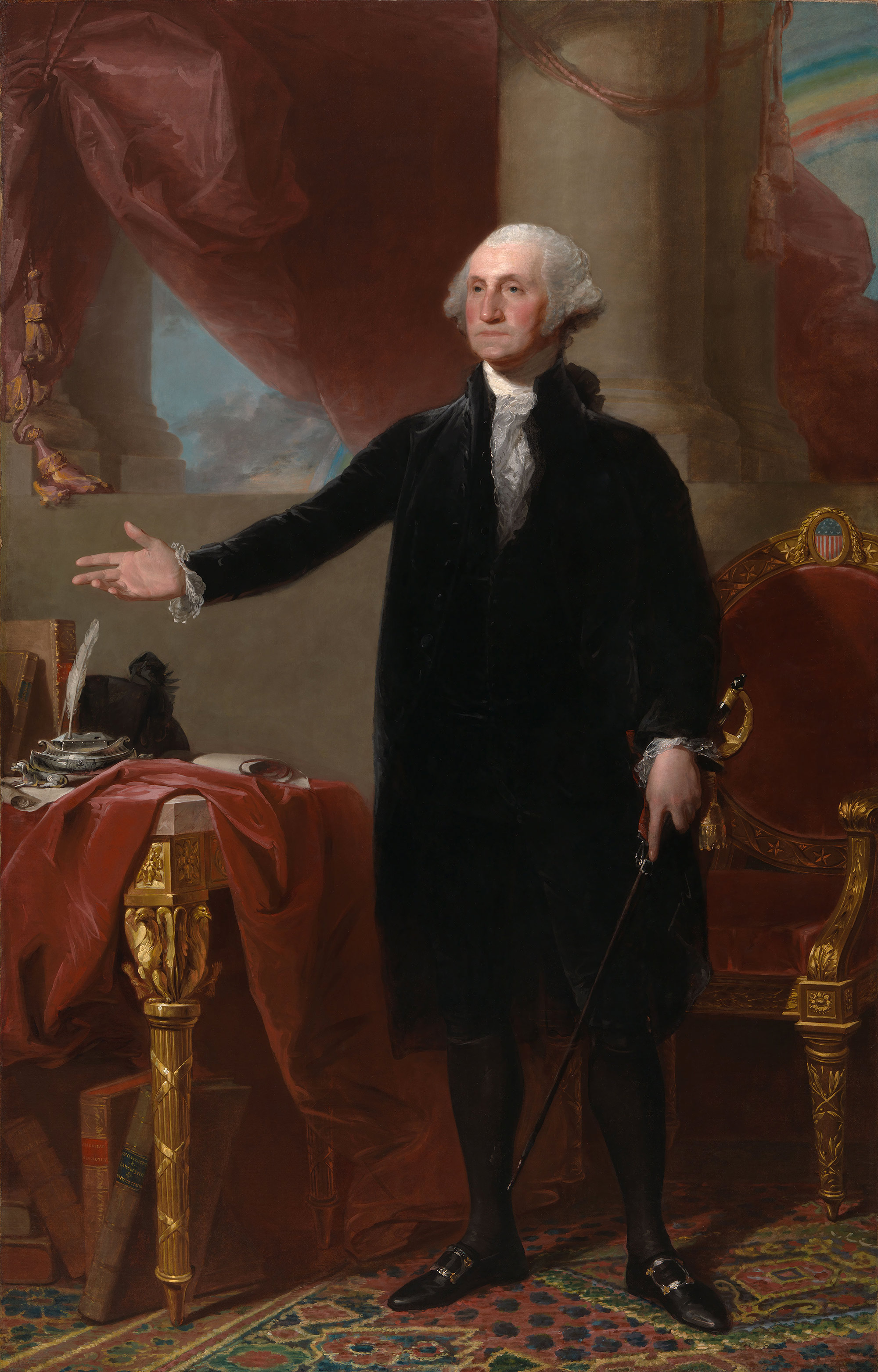George Washington

George Washington (1732–1799)
"Landsdowne Portrait"
As a military and political figure, George Washington was a unifying force during the country’s formative years. He fought in the French and Indian War and later served as commander-in-chief of the Continental Army in the Revolutionary War. After being unanimously elected as the first president of the United States, in 1789, he installed the Supreme Court and the cabinet, quelled the Whisky Rebellion, and defeated the Western Lakes Confederacy in the Northwest Indian War (and facilitated the subsequent peace negotiations with the alliance). Washington enjoyed immense popularity at the end of his second term, but he declined to run again, insisting that the United States needed to take proper precautions to avoid hereditary leadership or dictatorship.
As he mapped out the composition for this painting, American artist Gilbert Stuart, who had previously worked in England and Ireland, drew from European traditions of state portraiture to evoke Washington’s military and civic leadership. The artist made a number of direct references to the newly formed United States, and the pose he chose for the president is believed to allude to Washington’s annual address in front of Congress in December 1795. Stuart completed several replicas of the image, which spread rapidly through popular engravings.
Acquired as a gift to the nation through the generosity of the Donald W. Reynolds Foundation
